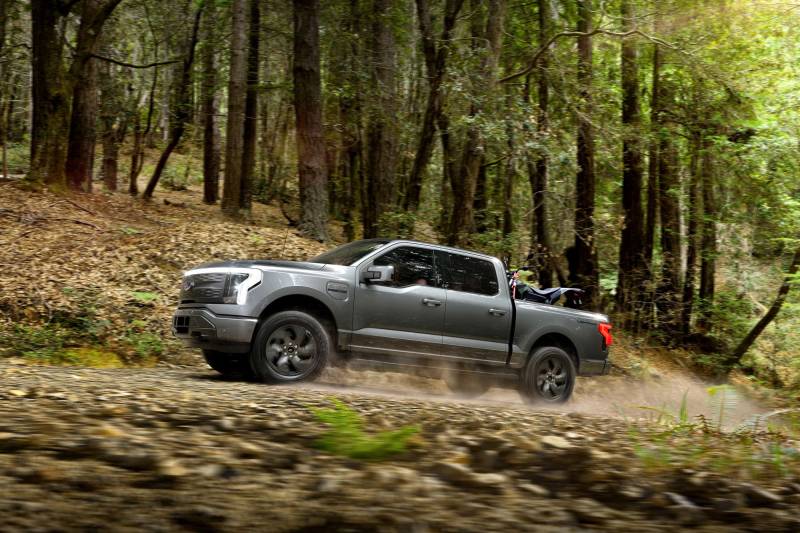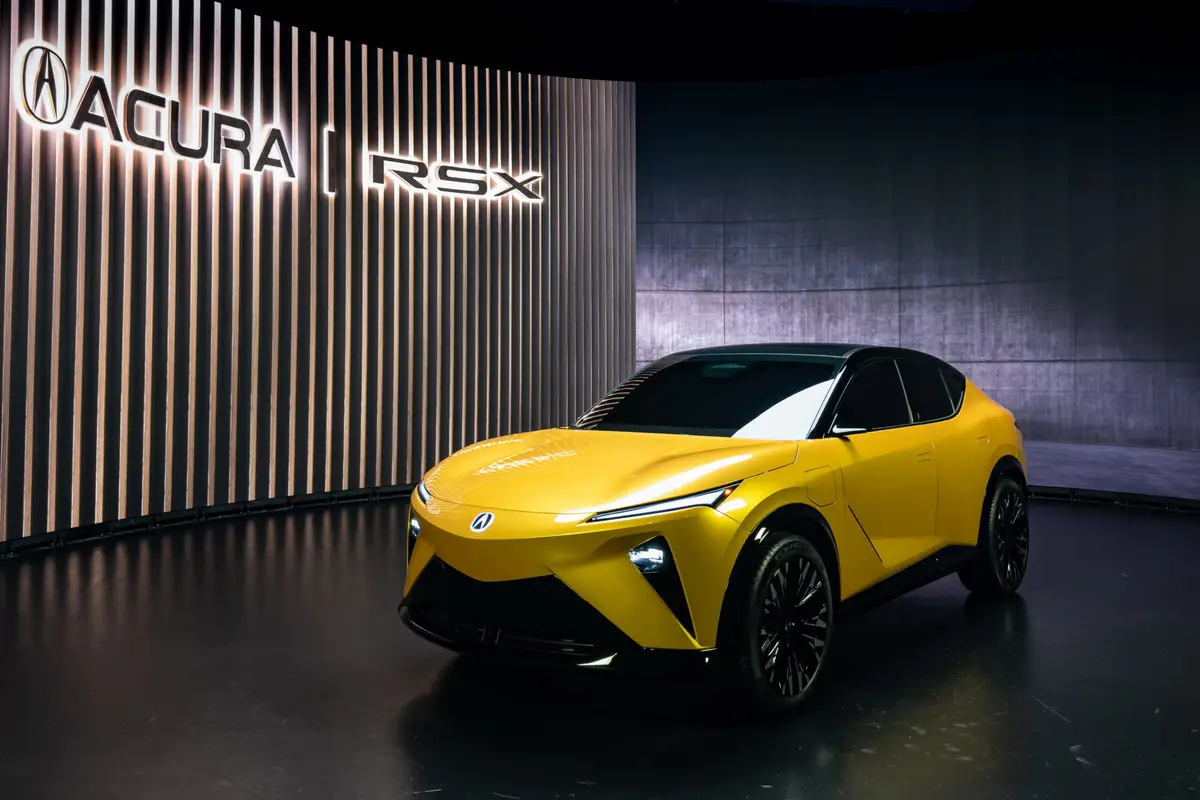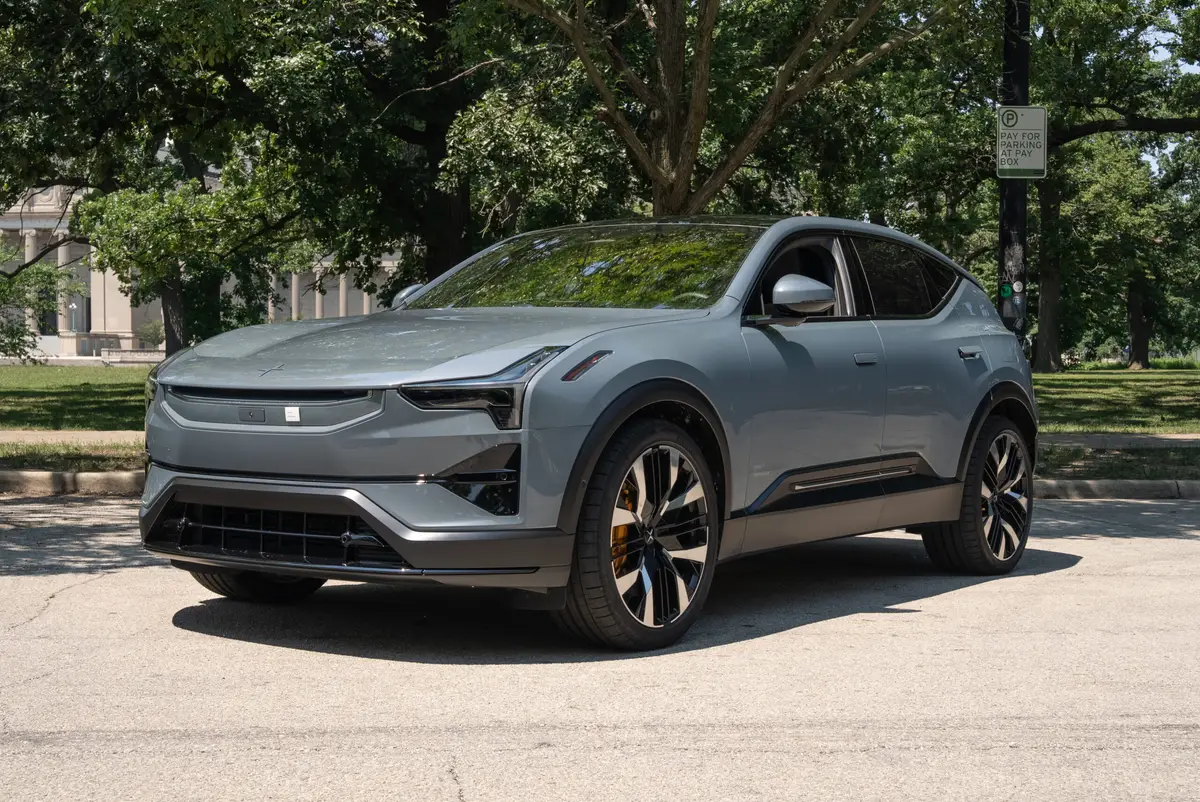2022 Ford F-150 Lightning EV Debuts With Truck and Trick Capabilities

With the debut of the 2022 Ford F-150 Lightning, we get our first look at Ford’s vision of an electrified pickup truck and it’s … decidedly normal. Rather than go the route, Ford gave the current F-150 a slight visual update in addition to mechanical and feature updates beyond the obvious battery-electric powertrain.
Various statistics have not yet been provided or finalized, but the numbers provided by Ford paint a picture of a fairly capable pickup with a few tricks up its sleeve — but also one that may not meet all of the traditional pickup truck benchmarks.
Lightning Quick
Ford quotes that the extended-range version of the F-150 Lighting is “targeting” 563 horsepower and 775 pounds-feet of torque from its dual-motor, four-wheel drive battery-electric powertrain. Obviously, “targeting” means those numbers haven’t been finalized, but they’re also very specific, so don’t expect final numbers to be too far off. The Lightning’s 0-60-mph time should be somewhere in the mid-four-second range, according to Ford. No power or acceleration figures were provided for the standard-range version.
Electric Range
We do have range estimates for both standard- and extended-range Lightnings, and this is one of the areas where the Lightning may not meet traditional truck needs. Ford says the extended-range Lightning is “targeting” 300 miles of EPA-rated range, while the standard-range version is aiming for 230 miles of EPA-rated range. PowerBoost hybrid F-150s, meanwhile, can travel more than 700 miles on a single tank. Other electric trucks’ range are equally nebulous at the moment: Tesla’s dual-motor Cybertruck is aiming for 300-plus miles of EPA range, while the Rivian R1T will launch with an expected 300-plus miles of EPA range.
What Ford isn’t saying right now — and something pickup owners are likely very interested in knowing — is how towing and hauling will affect the Lightning’s range. Like fuel economy when towing or hauling, the range will decrease, but by how much isn’t clear (and whether Ford can accurately calculate that anyway, given the different variables involved, also isn’t clear). What Ford is saying is that the range estimates in the Lightning will update in real-time depending on driving style, weather, payload or towing weight and other factors.
Lightning Towing, Payload
Despite lacking the long-range capabilities of other F-150s, the Lightning still offers decent towing and payload numbers. Its max payload capacity — including the bed, cabin and large front trunk — is 2,000 pounds, while its max towing capacity is 10,000 pounds. Neither figure is the best an F-150 can do, nor is it the worst; depending on how it’s configured, an F-150 can haul a maximum of 3,325 pounds or tow a maximum of 14,000 pounds.
Charging at Home and on the Road
The F-150 Lightning, like all Ford battery-electric vehicles, will come with a mobile charger that can plug into a 240-volt outlet with a 32-amp connector or a household 120-volt outlet with a 12-amp connector.
Standard-range owners can install an optional 48-amp Ford home charging station that can add 19 miles of range per hour and can charge the Lightning from 15% to 100% in about 10 hours. Extended-range trucks come with a standard 80-amp Ford Charge Station Pro that can add 30 miles of range per hour and complete the 15% to 100% charge in eight hours. The 80-amp unit is optional for the standard-range model.
Lightning drivers will also have access to a variety of public charging stations, which will be visible in the touchscreen display and via the FordPass app. Using 150-kilowatt DC fast charging, Ford says the extended-range Lightning can add 54 miles of range in 10 minutes of charging and go from 15% to 80% charge in 41 minutes. (Note that all of the above charging estimates are also “targeted” and may change for the production version.)
Like other electric vehicles, the Lightning will plot routes to include charging points as necessary during a trip, and it will also factor in towing and payload.
Additional Upgrades
On the outside, the F-150 Lightning will wear Lightning badging and have different wheels from other F-150s, but the main differentiators will be its new grille and tailgate. The front styling features lighting elements that stretch from headlight to headlight across the top of the grille, while the Lariat and Platinum trims include similar styling across the tailgate.
Under the skin — besides the motors and batteries — the biggest difference between the Lightning and other F-150s is its independent rear suspension, a first for an F-Series pickup. Ford chose this setup to accommodate the dual-motor powertrain and says it also provides improved ride and handling.
With no engine up front, Ford placed what it calls the Mega Power Frunk under the hood, giving owners additional storage space. The frunk’s volume is 400 liters, according to Ford, and can carry up to 400 pounds. Ford says it’s large enough for two golf bags, and it also has D-rings and cargo hooks to secure items. There’s also a small underfloor bin for smaller items, and it’s washable thanks to a built-in drain plug. The frunk has four electrical outlets and two USB chargers, and provides up to 2.4 kW of power.
Having seen how useful the ProPower onboard generator has been for both utility and emergency situations, Ford added similar capabilities to the Lightning. When connected to the 80-amp Ford Charge Station Pro in homes that are suitably prepared to receive such power, the Lightning can automatically act as a generator via its Intelligent Backup Power, providing 9.6 kW of power; when the outage is over, the Lightning will go back to charging. To make sure owners’ homes are prepared for this feature, Ford is partnering with solar company Sunrun to provide installation of the 80-amp Charge Station Pro and the additional home upgrades to use Intelligent Backup Power. Ford says owners can also use this opportunity “to install solar energy on their home.”
The Lightning provides the same amount of energy via its ProPower onboard generator, more than the F-150 hybrid’s most powerful ProPower option of 7.2 kW. The FordPass app will notify owners when onboard generator usage reduces range to a particular level, and owners can set it to stop providing power before range drops below the distance to the nearest charging station.
One other trick up the F-150 Lightning’s sleeve is the use of Ford’s Sync 4A operating system, standard on the Lariat and Platinum trims, which gives it a 15.5-inch vertical touchscreen display. Ford fans may recognize the display from its implementation in the all-electric Mustang Mach-E.
F-150 features including the fold-flat gear selector and fold-out work surface, fully reclining front seats, and Pro Trailer Hitch Assist are also available on the F-150 Lightning.
Pricing and Release Date
Reservations are now open for the F-150 Lightning and will cost $100. The truck itself will range in price from roughly $40,000 to $90,000 depending on trim level and equipment. More details are still to come ahead of the F-150 Lightning’s planned spring 2022 arrival.
PickupTrucks.com’s Editorial department is your source for automotive news and reviews. In line with PickupTrucks.com’s long-standing ethics policy, editors and reviewers don’t accept gifts or free trips from automakers. The Editorial department is independent of PickupTrucks.com’s advertising, sales and sponsored content departments.


Road Test Editor Brian Normile joined the automotive industry and Cars.com in 2013, and he became part of the Editorial staff in 2014. Brian spent his childhood devouring every car magazine he got his hands on — not literally, eventually — and now reviews and tests vehicles to help consumers make informed choices. Someday, Brian hopes to learn what to do with his hands when he’s reviewing a car on camera. He would daily-drive an Alfa Romeo 4C if he could.
Featured stories



2025 Polestar 3 Review: Understated Electrified Luxury

